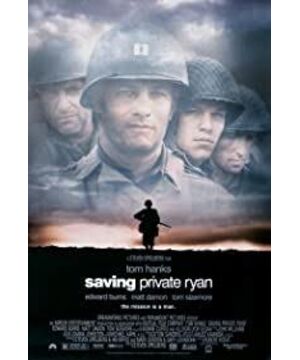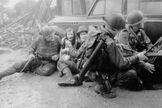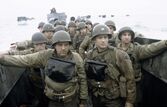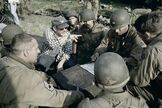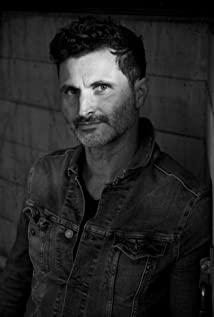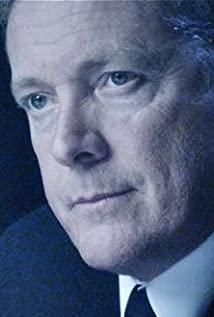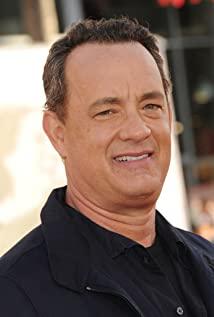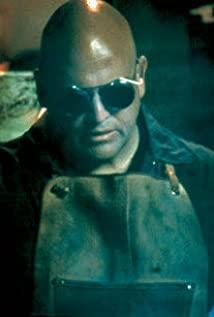There are many films based on the Normandy Landing, the most famous being "The Longest Day" (1962) and "Saving Private Ryan". "Saving Private Ryan", which was released on July 24, 1998, topped the box office in the United States at $216.1 million, and ranked tenth among the "100 Most Inspiring Movies" by the American Film Institute in 2006. As the most watched movie in the 1990s World War II movie craze, it was highly praised by many World War II veterans as "the film that most truly reflects World War II." In the first 24 minutes of Omaha Beach’s flesh-and-blood war scene, it “created visual and sound effects that other war films had never had before” and became a classic image that was difficult to surpass in later generations. However, it was also sharply criticized and regarded it as “inspiring” The shocking reality and indifference reached the point where it was unbearable." The American Film Institute classified it as "a film that extremely exaggerates the violence of war."
In addition, the film also sparked a long-running controversy: Is it worth sacrificing more people in exchange for one person's life? The film’s “sacrifice” to complete the “salvation” reflection did not go beyond the mainstream consciousness. While the pan-humanity or pan-humanitarian expression gained wide recognition and resonance, it also incurred the suspicion of using sensational narratives to obtain the greatest commercial benefits. This kind of evaluation is obviously not fundamental to Spielberg, who is "the most dramatic, conservative, and philosophical person". From the perspective of audience acceptance, the attention paid to an ordinary soldier so beyond the past is a milestone breakthrough, and the humanitarian care for a mother who is about to lose all her sons in the war is late to countless families who lost their relatives in the Vietnam War. Consolation is a conscious dispelling of the shadow of the Vietnam War, with a view to dissolving the doubts, disappointments, and fears that have accumulated in the hearts of the American people for many years since the Vietnam War, and regaining national self-confidence. As Emmanuel Levy said: “It goes beyond the realm of war and explores the weight of memory. This is the weight of the past and the weight that has to be carried now.”
Psychological intervention in the war film to show the cruelty of war and the motivation of the characters began in the 1950s. At the end of the century, "Saving Private Ryan" interprets a new topic of war ethics and combines the bloody horror of war with the heroic episode of the battle. Come up, highlight the humanitarian connotation of the killing, and constitute a strong contrast with the previous war films. "Living" is no longer the only purpose, and returning home with dignity to complete the task is manly. Just as Horvahi understood it, I hope to find that "saving Private Ryan is a glorious thing" when recalling the past! As a result, “sacrifice” has been given hidden and legal meanings, including social comfort and ideological needs. The rescue of individuals accomplished by the power of the state, on the one hand, shows the connotation of morality and conscience, on the other hand, because of more individuals. The demise of "justice" highlights the ambiguity of "justice". It is this self-contradictory “information” that constitutes the depth of the film. “Save” and “not save” are the dilemma choices. Paradoxes exist on either side, and this kind of complex entanglement lies in the powerful “U.S. "Victory Faith" becomes simple and meaningful: the film starts from focusing on the spiritual damage caused by the war to the individual (Ryan's mother), and then returns to personal dignity and national honor. The essence of "war" has not been fundamentally questioned. . From this, people will think further: In order to save a soldier, is there a reason to sacrifice the lives of other or more soldiers? Is there any direct relationship between the severity of the trauma of losing his son and how much he lost? The film's tortuous interpretation of "sacrifice" and the fact that Ryan is alive and well unabashedly praised the moral nobility of the US government and the US military. This new expression of "patriotism" and "heroism" is no different from the propaganda and summoning effects of early American war films. The theme of a pure "war film" returns", which aims to evoke memories of people's good feelings in the past. This also confirms Zha Altman’s thesis: “The motive for making genres predictable is that the films tend to be based on our early culture. The story is not only repeated back and forth, but must be based on a certain period in American history. As a background...War films always show what the United States did during the two wars. So and so praising our country’s past, the purpose is to make the audience have the illusion of participating in events of great cultural significance. The film extols the "beautiful past", It is a reminder that only by going back to the past can the present become more ideal."
Spielberg is undoubtedly regarded as the most successful business giant in Hollywood, and many of his films are among the best-selling films in history. It is precisely because of this that the academic community’s evaluation of Spielberg is polarized. Opponents accuse his film of being highly entertaining and "lack of depth." Proponents such as Lester Fredman firmly believe that "he was in the previous 30 years." The most controversial and most important film cultural person". Therefore, it is risky to interpret Spielberg's works truthfully and rationally. The gorgeous and complex scene scheduling and various technical processing scenes in "Saving Private Ryan" do show the director's unique visual expressiveness, but it is also easy to "ignore the extensive social and psychological significance embedded in the work." ". As John Hodgkins said on contemporary World War II films: "The philosophical and ideological influences of war films often go far beyond the meaning implied by their superficial plot... The Second World War constitutes a film framework, through In this framework, film directors (and audiences) can discuss contemporary technology, psychology, morality, and war itself, and touch those national "psychological-social-historical realms". These realms were later compared with each other in the years after the United States defeated Hitler and Fascism. The entanglement between Vietnam and Iraq is stained with an indelible color.” Obviously, Spielberg used a cinematic method to provide a morally perfect redemption for past national crimes, sweeping away the failures of the people who lingered in the shadow of the Vietnam War. Complex, to save Ryan is to save the people, and Ryan, who is found by the squad in the film, refuses to leave his comrades, reshaping the American army and American spirit. At the same time, the noble implication of "nationalism" contained in the Civil War in Lincoln's era was reasonably projected into the national consciousness, so that history and reality, ideology, and people's psychology can achieve a perceptual charm, and jointly complete the return of heroes, honor and justice. One's imagination. Moreover, the tragic Normandy landing and the "sacrifice" of highly infectious individuals emphasized the United States' leading position and image of victory in the anti-fascist alliance.
Due to aesthetics and economic reasons, Hollywood has always maintained a prudent balance between inheritance and innovation. Many famous directors will "in any necessary way" to express their respect to the tradition while maintaining their own unique aesthetic style marking genealogy. . Spielberg is no exception. "Saving Private Ryan" follows the typical paradigm of American war movies that first appeared in "Blood on Bataan" (1943)-the "squad" model, usually composed of different personalities, People of identity, region, and class form a fighting group. In the film, Miller is a teacher from Pennsylvania, and the honest and brave Howach is his best friend in the military; Leben from New York is full of energy and maverick; Jackson, who believes in the Bible, is from Tennessee The home of a pastor in China; Melish is a Jew who hates the Nazis; Wade, a hygienist, is gentle and conscientious; Capazzo, an Italian private soldier from a worker background, is reckless and hasty; Upam is a complete nerd. This membership structure reflects the value orientation advocated by American films to break class differences and integrate various immigrant cultures to build a new life in the United States. Reminiscent of the top ten blockbusters in 1942, "Wake Island" was hailed as "a realistic film depicting heroes who do not act like heroes", and created the "fight to the end" theatrical mode of the World War II war film. "Saving Private Ryan" also realistically reflects the violence of war at the beginning, and at the end, it is a tribute return to the tradition of American war films, and it is in the same line with the return of the theme.
It is worth noting that the film’s narrative strategy of condensing the plot attaches great importance to Hollywood’s usual standard routines, repeated details such as Miller’s trembling hands, family letters, identity cards, crosses, memories of peacetime, in the German dictionary The frequent use of the unproven words "duty" and the imagination of mothers and family members are all effective ways to aggregate plots and themes. The placement of key details served as a symptom of "agreement" in the narrative strategy. Upam used the POW manual to defend the German soldiers, and eventually killed his comrades in arms. The war gave him something tangible beyond the books. The lesson seems to be a great irony of the rules of prisoners of war, and it echoes the plot of the slaughter of German prisoners of war after the successful landing of the US army in the film, and finally with Upam's "rising" to kill the prisoners at the moment of victory, which produced a cumulative effect of emotions and constructed a The gradual and complete process in line with the logic of the battlefield highlights drama and credibility.
The film’s “de-heroic” outline of everyone in the “squad” is lifelike no matter how much the ink is written. Characters with shortcomings or weaknesses are often the objects of Hollywood movies particularly detailed descriptions. Miller and Upham are the most fully described. . In the eyes of the small group of soldiers, Miller’s identity is a “mystery”, but no one thinks he is a “civilian”. He has been awarded the highest medal of honor for a soldier. “It was assembled from the body parts of fallen soldiers at the alternate officer school. "The most important thing is that he is "the only good official in the whole bastard army." Therefore, the gentle Miller is not only substantively different from the military officer or "hero" in the traditional sense, but is more like an alternative image of a confident "father-to-be", or a kind teacher, or even The role of mother. As a teacher before the war, he will always be as patient and meticulous towards soldiers as he is towards students. For example, when everyone questioned the value of action at the beginning of the film, he asked everyone to speak freely, answer everyone’s questions in a persuasive manner, and make pertinent comments on right and wrong, and finally came to the conclusion that it was like a summer camp activity or a field led by the teacher. train. This is of course related to the ideas of screenwriters and directors who have a World War II complex. I hope that when praising the awe-inspiring spirit of sacrifice and patriotism in the Acura War, I hope to highlight the individual's sense of responsibility to family, friends, and subordinates. Therefore, the departure of Miller means the complete disappearance of the illusion of a warm family built in the hearts of soldiers in the army, just as Leben looked at Miller’s body broken and desperate in his eyes, as if his heart was hollowed out. This is the victory of the war. The huge pain that can't be quelled. And Miller also has the weaknesses of ordinary people. From time to time, trembling hands appear repeatedly in the film, exposing his fear, cowardice, and the inner suffering of fighting spirit, to imply the great mental pressure of war on him. "The desire and anxiety are the same as those of other people.
Upham is another very important dark line in the film. If the flashback from Ryan’s perspective in the film does not coincide with actual experience, especially the plot before Normandy’s landing and finding Ryan, it is entirely a collective memory from the omniscient perspective. ". Then, Upam played a role of invisible perspective to a large extent, exposing the blood, cruel, absurd, and ugliness of the war through his feelings. Until the end, he did not like the Emerson poetry that he worshipped. Really grow up in the war. His ridiculousness lies in the metaphysical talk about war, but it is useless in war, and even indirectly led to the deaths of Henderson, Melish and Miller. His disregarded, hurried, talkative and speculative character has become an image of an "intellectual" in the war that is not understandable and appreciated. Like Miller, he has independent character both before and during the war. The "intellectuals" who bring confidence and courage, can lead the way, and have perfect personalities are completely different. Although the film represents the mainstream ideology of the United States, it reveals to a certain extent the instinctive fear, self-protection, and the dark side of the spiritual world in the human heart. Perhaps these certain and uncertain themes have jointly created Spielberg's film. Often has "lasting energy".
Almost all comments praised the bold and novel photography skills and documentary style of the 24-minute Omaha landing. It used a portable camera with an "image shaker" to shoot in a news documentary style, relying on photography skills and mechanical properties. , Lighting setting and a small amount of digital special effects, creating a movie like a battlefield photographer using 16mm film when he landed with the army. In fact, it is specific to these pictures of soldiers wiping the ground at close range, the shaking shots splashed with blood and sea water, the later process of unsaturated film color processing, the war photos that imitate Robert Capa's rough texture, and the use of smoke to reduce the light. Brightness and “trace” photography creates the “tailing” phenomenon, the cross-use of coated and non-coated lenses produces the effect of uneven image quality of file data sheets, etc. Many of these are traditional or even deliberately unwieldy photography techniques. The story that happened half a century ago has established a rare and immersive on-site reality. This is fundamentally different from many war films who are keen to show war scenes and Hollywood’s ubiquitous “technicalism”. Therefore, "Saving Private Ryan" still reflects the consistent style of Spielberg's movies-by Jeff. The "impact aesthetics" used in filming and editing summarized by Jin, and those "violent movement" scenes stimulated the "strong instinctive response" that made the audience nervous and suffocating. There are also those multiple technical methods that are mixed in sports, such as portable photography, close-ups, wide-angle, zoom, long-lens, and complex and precise scene scheduling that can be called college textbooks. Spielberg has always been the iconic film language of Spielberg. A pedigree of styles that existed as early as in "Jaws", "Indiana Jones Trilogy" series of films, "Empire of the Sun" and later "Jurassic Park" and other films.
View more about Saving Private Ryan reviews


